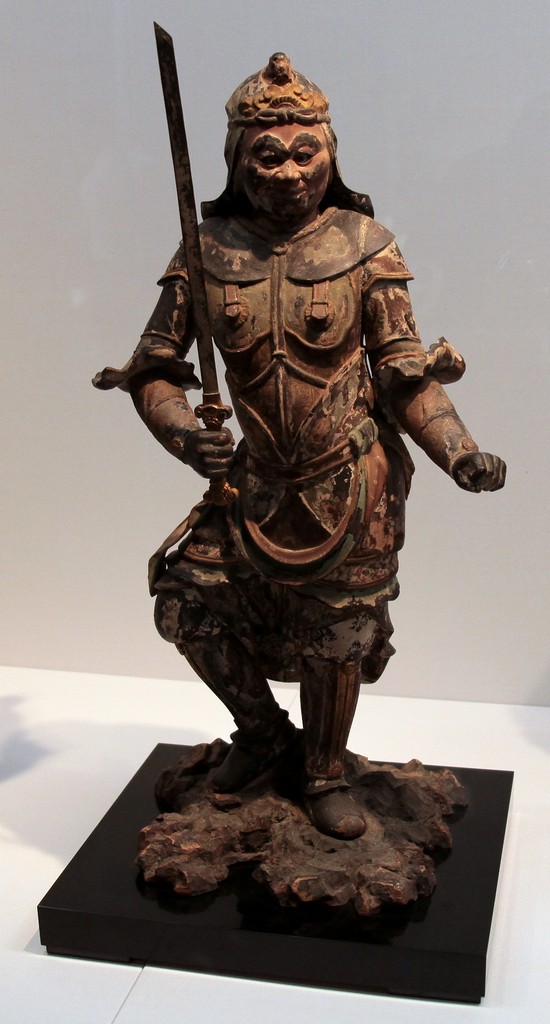STANDING JUNISHINSHO
Standing Jūni Shinshō, Juni Shinsho ( 十二神将) Also known as Jūni Shinnō (十二神王)
Twelve Heavenly Generals of Yakushi Buddha
Shinjin (Monkey General) - Kamakura period, 13th century
Wood with polychromy, cut gold leaf and inlaid crytal eyes. Important cultural property of Japan. National Museum Tokyo.
Said to have been formerly owned by Joruriji Temple, Kyoto.
Said to have been formerly owned by Joruriji Temple, Kyoto.
The 12 Heavenly Generals protect and serve Yakushi Nyorai (the Medicine Buddha).
The twelve are Hindu Yasha 夜叉 who were later incorporated into Buddhism as protective warriors. In Japanese sculpture and art, they are almost always grouped in a protective circle around Yakushi Nyorai (they are rarely shown independently). Many say they represent the twelve vows of Yakushi; others say the 12 were present when the Historical Buddha introduced the “Healing Sutra;” yet others that they offer protection during the 12 daylight hours, or that they represent the 12 months and 12 cosmic directions, or the 12 animals of the 12-year Chinese zodiac. The Jūni Shinshō are also members of the Tenbu (Sanskrit: Deva), a larger grouping of deities protecting the Buddhist realm.
While interpretations differ, the Jūni Shinshō are always depicted with fierce facial expressions and menacing martial stances. They usually wear armour, topped off with a helmet or spiked hair. Their main function is to protect Yakushi Nyorai, to protect those who read/believe in Buddhist writings that expand faith in Yakushi, to fight the enemies of Buddhism, and to wage war on sickness (they are said to command the 84,000 pores (some resources say 80,000) of the skin in defending the health of the faithful). Their ferocious expressions represent their anger with evil deeds and evil people.
Yakushi Nyorai, along with his 12 attendants, arrived early in Japan (Asuka Period) from Korea and China, and soon appeared in temples throughout the nation. As such, the 12 Generals of Yakushi Buddha are among the very first Buddhist deities to be introduced to Japan in the 6th and 7th century AD. By the late Heian period, or early Kamakura era, the twelve become associated/confused with the 12 animals (see details below) of the Chinese zodiac, and sculptures thereafter often show an animal in the head dress of each general. The general named Kubira 宮毘羅 is the leader of the twelve.
